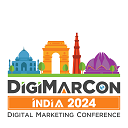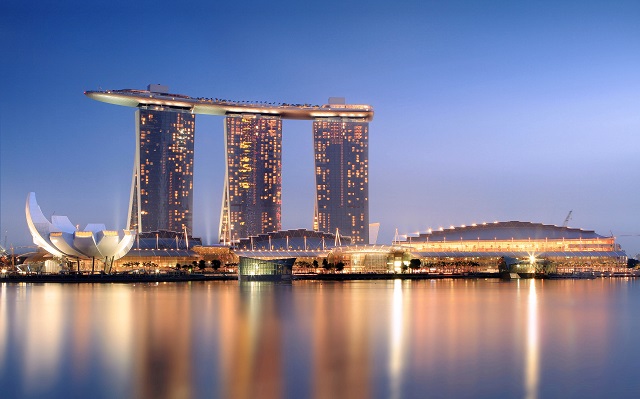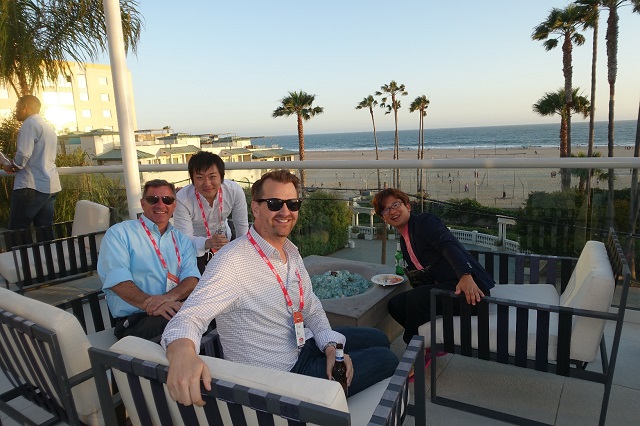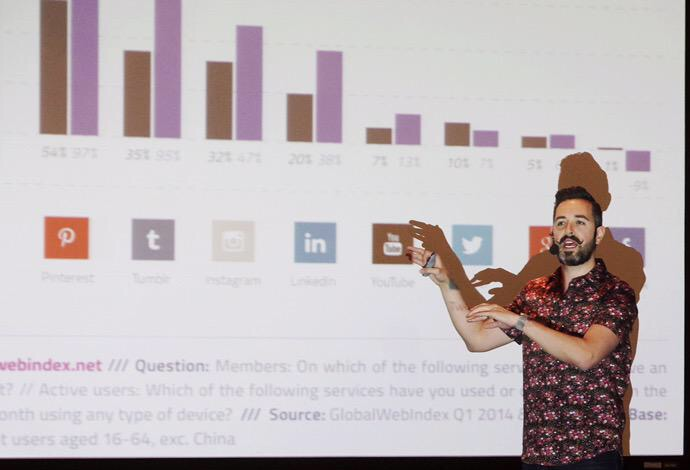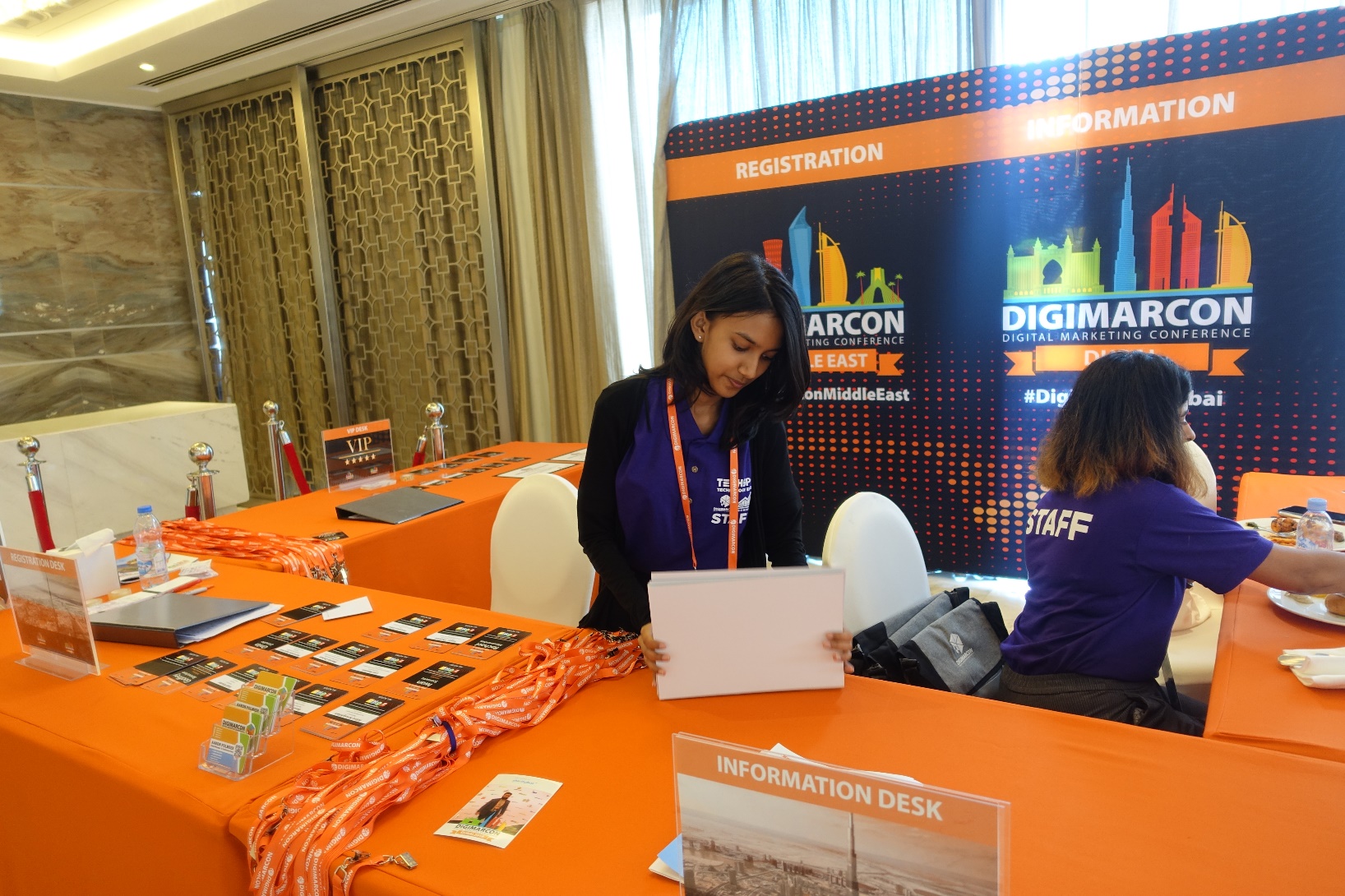- Hear from the most audacious and provocative speakers in the digital marketing industry.
- Gain insight into emerging strategies, the latest innovative technologies, and best practices.
- Network with thought leaders, build your network and collaborate with your peers.
DigiMarCon India 2024 Digital Marketing Conference will be held from September 25th - 26th, 2024 online, live and on demand. Whether your goal is to reinforce customer loyalty, improve lead generation, increase sales, or drive stronger consumer engagement, the DigiMarCon India 2023 program has been specifically designed to help attendees develop their audience.
Immerse yourself in topics such as digital strategy, programmatic advertising, web experience management, usability / design, mobile marketing & retargeting, customer engagement, user acquisition, social media marketing, targeting & optimization, video marketing, data science & big data, web analytics & A/B testing, email marketing, content marketing, conversion rate optimization, search engine optimization, paid search marketing, geo-targeting, predictive analysis & attribution, growth hacking, conversion rate optimization, growth marketing tools, marketing & sales automation, sustainable growth strategies, product marketing & UX / UI and much, much more!
DigiMarCon India 2024 offers all of the elements you need to achieve digital marketing success! Conventional thought will be challenged, new ways of thinking will emerge, and you will leave with your head and notebook full of action items and ideas to lead your agency / team / account to even greater success.
Come to DigiMarCon India 2024 and discover how to thrive as a marketer in a world where everything is digital.
Take advantage of our super saver registration rates and secure your seat early.
For more details visit https://digimarconindia.in. IndiaDelhi NCR Climate
The climate of Delhi is an overlap between monsoon-influenced humid subtropical (Köppen climate classification Cwa) and semi-arid (Köppen climate classification BSh), with high variation between summer and winter temperatures and precipitation. Delhi’s version of a humid subtropical climate is markedly different from many other humid subtropical cities such as Sao Paulo, New Orleans and Brisbane in that the city features dust storms (something more commonly seen in a desert climate), has relatively dry short winters and has a prolonged spell of very hot weather, due to its semi-aridclimate.
Summer is certainly not the best time to visit Delhi. It starts in early April and peaks in May, with average temperatures near 32 °C although occasional heat waves can result in highs close to 45 °C (114 °F) on some days and therefore higher apparent temperature. The monsoon starts in late June and lasts until mid-September, with about 797.3 mm (31.5 inches) of rain. The average temperatures are around 29 °C (85 °F), although they can vary from around 25 °C (78 °F) on rainy days to 32 °C (90 °F) during dry spells. The monsoons recede in late September, and the post-monsoon season continues till late October, with average temperatures sliding from 29 °C (85 °F) to 21 °C (71 °F).
Winter starts in late November or early December and peaks in January, with average temperatures around 12–13 °C (54–55 °F).Although winters are generally mild, Delhi’s proximity to the Himalayas results in cold waves leading to lower apparent temperature due to wind chill. Delhi is notorious for its heavy fogs during the winter season. In December, reduced visibility leads to disruption of road, air and rail traffic. They end in early February, and are followed by a short spring until the onset of the summer.
Extreme temperatures have ranged from −2.2 °C to 48.4 °C.
Overview of Seasonal Distribution
- Summer: April, May, June; Hot to very hot; Very low to moderate humidity; Low precipitation
- Monsoon (Rainy): July, August, September; Hot, Pleasant during rains; High to very high humidity; Heavy precipitation
- Autumn: October, November; Warm days, Cool nights, Pleasant; Low humidity; Low precipitation
- Winter: December, January; Cool to Cold; Moderate humidity; Low precipitation
- Spring: February, March; Warm days, Cool nights, Pleasant; Low to moderate humidity; Moderate precipitation
Seasons
Delhi lies in the landlocked Northern Plains of the Indian Subcontinent. Its climate is greatly influenced by its proximity to the Himalayas and the Thar Desert, causing it to experience both weather extremes. Delhi has 5 distinct seasons, viz. Summer, Rainy, Autumn, Winter and Spring. Broadly speaking, Delhi has long and scorching summers- sub-divided into summer and monsoon seasons, short and cold winters, and two bouts of pleasant transition seasons. Two most important wind patterns influencing Delhi’s climate are the Western Disturbance and the South-West Winds.
Summer
Summer begins in early April and continues till the end of June, with the heat peaking in May. It is characterized by extreme heat, low humidity, very hot winds and thunderstorms. Delhi’s proximity to the Thar Desert results in hot, dry continental winds, called loo, at times blowing all across from the West Asian mainland, making the days feel hotter. These winds, blowing over from vast land stretches, are very hot and dry. Since the Western Disturbance depression moves eastward (and is the reason for cyclonic occurrences in Eastern Coastal areas) by this time of the year, there is no moisture-laden wind to increase humidity. The air therefore remains dry or very dry during day. For most of its summer season, Delhi has a semi-aridclimate. Coming from Spring, the city witnesses a spurt in day temperature around early April, whereas nights still remain pleasant. By the latter part of April or during early May, maximum temperatures exceed 40 °C while the ambience remains very dry. Night temperatures cross the 20 °C mark towards the latter part of April. May is Delhi’s hottest month during which temperatures may reach 45 °C or higher. This month is characterized by frequent thunderstorms. Dust storms are another feature of Delhi’s summer, and can be severe and destructive when accompanied by strong winds, particularly under cumulonimbus formation. These are caused due to fine dust brought along by the hot winds arriving from the desert. They make the surroundings appear pale yellow, bring temperatures slightly down and are usually followed by thunderstorms. Post mid-June, temperatures start falling slowly, while humidity shows a gradual rise. A visual characteristic of summer in Delhi is the summer bloom, particularly the blooming Bougainvillea, Amaltas, Gulmohar, Shireesh and Jacaranda trees, which look spectacular when fully flowering during peak summer in May.
Monsoon
Monsoon winds arrive in Delhi by either the end of June or the first week of July. The arrival of moisture laden South-Western winds, traveling from the Arabian Sea marks the onset of Rainy season in Delhi. This season is marked by high levels of humidity and high heat. Day temperatures drop below 40 °C as humidity suddenly soars. July is marked by high heat and relatively less precipitation (as compared to August). This transition from scorching to sweltering heat between June and July makes the latter feel very uncomfortable. August is Delhi’s wettest month. The heat is considerably reduced and it is relatively cooler for most part of the month. There is dense cloud formation in the sky and at least a week of distinct, very heavy rainfall. By September, the amount and frequency of precipitation drops, though humidity remains high. Towards the end of September, moisture content in the air begins to fall and monsoon ends by early October.
Autumn
The end of monsoon marks the arrival of a transition season. Autumn arrives by early or mid October, and is marked by very dry ambiance, warm days and pleasant nights. Maximum temperatures drop below 30 °C by late October and there is a gradual fall in average temperature. Minimum temperature drops below 20 °C. During Autumn, the wind direction begins changing from South-Westerly to North-Westerly. Around late autumn/ early winter, the variation between morning and afternoon temperatures in a day becomes considerable, and can often be more than 20 °C, with minimum dropping to under 10 °C and maximum still hovering slightly under 30 °C. This season ends by early December.
Winter
Winter arrives in Delhi by late November or early December. Minimum temperatures gradually enter single digits by this time of the year, while days are pleasant. Though usually not cold initially, December suddenly becomes cold in the latter half, as chilly north-western winds from the Himalayas begin sweeping the Northern Plains. These cold waves are caused by a depression created by Western Disturbance, which bring cloud cover and occasional winter rains to the Plains, and add to snowfall in the North-Western Indian Subcontinent. By early January, when winter peaks in Delhi, the minimum temperatures plunge to the vicinity of 0 °C, though very rarely entering the negative scale. Maximum temperatures, too may drop down into single digits and always stay under 20 °C. When the minimum temperature ventures very close to the 0 °C mark, Delhi witnesses frost. Snow is a practical impossibility for Delhi (and the rest of Northern Plains) due to very dry nature of its winter- the coldest conditions happen under clear skies when icy winds rush in from the Himalayas, and a cloud cover (which is necessary for causing snowfall) rather warms the city by trapping heat, thereby junking any possibility of snow. Delhi’s winter is marked by very dense fog, which dramatically reduces visibility and makes days colder by cutting off sunlight. In the opposite scenario, cold north-westerly winds from the upper reaches of Himalayas blowing across the city makes the days feel colder, despite any sunshine and the nights further cold. Post mid-January, average temperatures begin to rise very gradually, though the rise is almost contained by the cold north-western winds which result due to very heavy snowfall that occurs in the Himalayas during this part of the month. It may rain towards the end of January and the precipitation is usually accompanied by hail, resulting in slight increase in minimum temperatures due to cloud cover. Maximum temperatures again cross 20 °C and days become pleasant. By mid-February or somewhat beyond, minimum temperature crosses the 10 °C mark and days start getting warmer gradually, marking the end of winter. Delhi can sometimes have prolonged season of chill, extending into March.
Spring
Around the middle of February, Delhi’s climate sees another transition, this time from Winter to Summer. The transition weather is known as Spring and is characterized by warm days, cool nights, dry ambiance and lively natural surroundings. The weather is pleasant and there is warm, brilliant sunshine during the day. Spring rains are a characteristic of this season. These rains may be accompanied by hail and can be heavy. Average temperatures show a slow, gradual rise as the wind direction shift from North-West to South-West, thereby getting warmer. Around late spring/ early summer, the variation between morning and afternoon temperatures in a day becomes considerable, and can often be more than 20 °C, with maximum rising to mid 30’s °C and minimum in the mid 10’s °C. Spring ends by the latter half of March and the day temperatures exceed 30 °C by then, marking the onset of the next summer.
Climate data
Temperature records for Delhi exist for a period of a little over 100 years. The lowest ever temperature reading during this period is -2.2 °C, recorded on 11 January 1967 at Met Delhi Palam. And, the highest ever temperature reading during the same period is 48.4 °C recorded on 26 May 1998, again at Met Delhi Palam.
| hideClimate data for Delhi (Safdarjung) 1971–1990 | |||||||||||||
|---|---|---|---|---|---|---|---|---|---|---|---|---|---|
| Month | Jan | Feb | Mar | Apr | May | Jun | Jul | Aug | Sep | Oct | Nov | Dec | Year |
| Record high °C (°F) | 30.0 (86.0) |
34.1 (93.4) |
40.6 (105.1) |
45.6 (114.1) |
47.2 (117.0) |
46.7 (116.1) |
45.0 (113.0) |
42.0 (107.6) |
40.6 (105.1) |
39.4 (102.9) |
36.1 (97.0) |
29.3 (84.7) |
47.2 (117.0) |
| Average high °C (°F) | 21.0 (69.8) |
23.5 (74.3) |
29.2 (84.6) |
36.0 (96.8) |
39.2 (102.6) |
38.8 (101.8) |
34.7 (94.5) |
33.6 (92.5) |
34.2 (93.6) |
33.0 (91.4) |
28.3 (82.9) |
22.9 (73.2) |
31.2 (88.2) |
| Daily mean °C (°F) | 14.3 (57.7) |
16.8 (62.2) |
22.3 (72.1) |
28.8 (83.8) |
32.5 (90.5) |
33.4 (92.1) |
30.8 (87.4) |
30.0 (86.0) |
29.5 (85.1) |
26.3 (79.3) |
20.8 (69.4) |
15.7 (60.3) |
25.1 (77.2) |
| Average low °C (°F) | 7.6 (45.7) |
10.1 (50.2) |
15.3 (59.5) |
21.6 (70.9) |
25.9 (78.6) |
27.8 (82.0) |
26.8 (80.2) |
26.3 (79.3) |
24.7 (76.5) |
19.6 (67.3) |
13.2 (55.8) |
8.5 (47.3) |
19.0 (66.2) |
| Record low °C (°F) | −0.6 (30.9) |
1.6 (34.9) |
4.4 (39.9) |
10.7 (51.3) |
15.2 (59.4) |
18.9 (66.0) |
20.3 (68.5) |
20.7 (69.3) |
17.3 (63.1) |
9.4 (48.9) |
3.9 (39.0) |
1.1 (34.0) |
−0.6 (30.9) |
| Average precipitation mm (inches) | 19 (0.7) |
20 (0.8) |
15 (0.6) |
21 (0.8) |
25 (1.0) |
70 (2.8) |
237 (9.3) |
235 (9.3) |
113 (4.4) |
17 (0.7) |
9 (0.4) |
9 (0.4) |
790 (31.1) |
| Average precipitation days (≥ 1.0 mm) | 1.7 | 2.5 | 2.5 | 2.0 | 2.8 | 5.5 | 13.0 | 12.1 | 5.7 | 1.7 | 0.6 | 1.6 | 51.7 |
| Average relative humidity (%) | 63 | 55 | 47 | 34 | 33 | 46 | 70 | 73 | 62 | 52 | 55 | 62 | 54 |
| Mean monthly sunshine hours | 214.6 | 216.1 | 239.1 | 261.0 | 263.1 | 196.5 | 165.9 | 177.0 | 219.0 | 269.3 | 247.2 | 215.8 | 2,684.6 |
| Source #1: NOAA | |||||||||||||
| Source #2: Indian Meteorological Department (record high and low up to 2010) | |||||||||||||
| hideClimate data for Delhi (Palam) | |||||||||||||
|---|---|---|---|---|---|---|---|---|---|---|---|---|---|
| Month | Jan | Feb | Mar | Apr | May | Jun | Jul | Aug | Sep | Oct | Nov | Dec | Year |
| Record high °C (°F) | 31.0 (87.8) |
35.7 (96.3) |
41.3 (106.3) |
45.3 (113.5) |
48.4 (119.1) |
47.6 (117.7) |
45.7 (114.3) |
43.2 (109.8) |
40.8 (105.4) |
39.6 (103.3) |
36.4 (97.5) |
30.0 (86.0) |
48.4 (119.1) |
| Average high °C (°F) | 20.8 (69.4) |
23.9 (75.0) |
30.0 (86.0) |
36.9 (98.4) |
40.5 (104.9) |
40.3 (104.5) |
35.4 (95.7) |
33.7 (92.7) |
34.2 (93.6) |
33.3 (91.9) |
28.3 (82.9) |
22.7 (72.9) |
31.7 (89.1) |
| Average low °C (°F) | 6.7 (44.1) |
9.1 (48.4) |
14.1 (57.4) |
20.5 (68.9) |
25.1 (77.2) |
27.6 (81.7) |
26.4 (79.5) |
25.6 (78.1) |
23.8 (74.8) |
18.8 (65.8) |
12.7 (54.9) |
7.8 (46.0) |
18.2 (64.8) |
| Record low °C (°F) | −2.2 (28.0) |
−1.6 (29.1) |
3.4 (38.1) |
8.6 (47.5) |
14.6 (58.3) |
19.8 (67.6) |
17.8 (64.0) |
20.2 (68.4) |
13.6 (56.5) |
9.9 (49.8) |
2.1 (35.8) |
−1.3 (29.7) |
−2.2 (28.0) |
| Average precipitation mm (inches) | 18.9 (0.74) |
16.6 (0.65) |
10.8 (0.43) |
30.4 (1.20) |
29.0 (1.14) |
54.3 (2.14) |
216.8 (8.54) |
247.6 (9.75) |
133.8 (5.27) |
15.4 (0.61) |
6.6 (0.26) |
15.2 (0.60) |
795.4 (31.31) |
| Source: Indian Meteorological Department | |||||||||||||
Weather monitoring stations
Delhi has two weather monitoring stations, one at Safdarjung inside the main city and other at Palam on its outskirts near the Airport. The readings at Safdarjung station are taken as those for the city, whereas the readings at Palam station are taken as those for the Airport.
Day-length variation
Located at 28°36′36″N latitude, Delhi lies in the sub-tropical belt of earth’s North Temperate geographical region, a few latitudes north of the Tropic of Cancer. As such the rotation of earth has its effect on the city’s day-length, which shortens during winters and lengthens during summers. Between the two solstices, Delhi’s day-length changes by about 4 hours, offset by some 2 hours each at sunrise and sunset.

